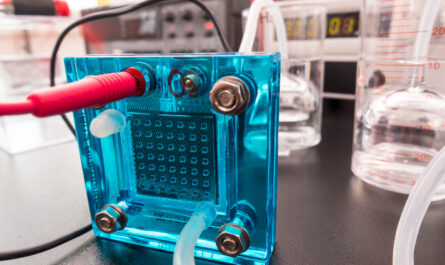In a groundbreaking study co-led by the University of Leeds, researchers have identified a rare disorder that leads to the birth of babies with extra fingers and toes, as well as a range of other birth defects. This disorder, currently unnamed, is caused by a genetic mutation in a gene called MAX and has been linked to symptoms related to brain growth, such as autism.
This is the first time that scientists have discovered the genetic link to this disorder. Furthermore, they have also identified a molecule that shows potential for treating the neurological symptoms associated with the disorder and preventing their progression. However, further research is required to test and validate the efficacy of this molecule before it can be used as a treatment.
The findings of this research have been published in The American Journal of Human Genetics. The study focuses on three individuals who share a rare combination of physical traits, namely polydactyly (extra digits) and macrocephaly (larger than average head circumference). These individuals also experience delayed development of their eyes, leading to vision problems at an early age.
Upon comparing the DNA of these individuals, the research team found that they all carried the same genetic mutation responsible for their birth defects.
The study was co-led by Dr. James Poulter from the University of Leeds, Dr. Pierre Lavigne at Université de Sherbrooke in Québec, and Professor Helen Firth at Cambridge University.
Dr. Poulter, a UKRI Future Leaders Fellow and University Academic Fellow in Molecular Neuroscience, stated that currently, there are no treatments available for patients with this disorder. He emphasized the importance of researching rare conditions, not only to deepen our understanding of them but also to identify potential treatment options.
In this case, the researchers identified a drug that is already undergoing clinical trials for another disorder. If their research confirms that this drug can reverse some of the effects of the genetic mutation, it could be fast-tracked for use in patients with this rare disorder. Additionally, this breakthrough enables other patients with similar physical traits to be tested for the identified genetic variant.
The study team stressed the significance of interdisciplinary research in rare diseases, as it provides understanding and hope for families who often face years of uncertainty about their child’s condition and prognosis.
Dr. Poulter added that these conditions are often overlooked and have a profound impact on patients and their families. The diagnostic process for these families can be complex and lengthy, with the time between their first doctor’s visit as babies and receiving a proper diagnosis often exceeding 10 years.
For patients and their families, discovering the cause of their condition and having access to a therapy based on their genetic diagnosis can be life-changing. The identification of this rare disorder and the potential treatment option derived from this research offer hope to affected families and paves the way for further advancements in the field of rare genetic disorders.
*Note:
1. Source: Coherent Market Insights, Public sources, Desk research
2. We have leveraged AI tools to mine information and compile it




